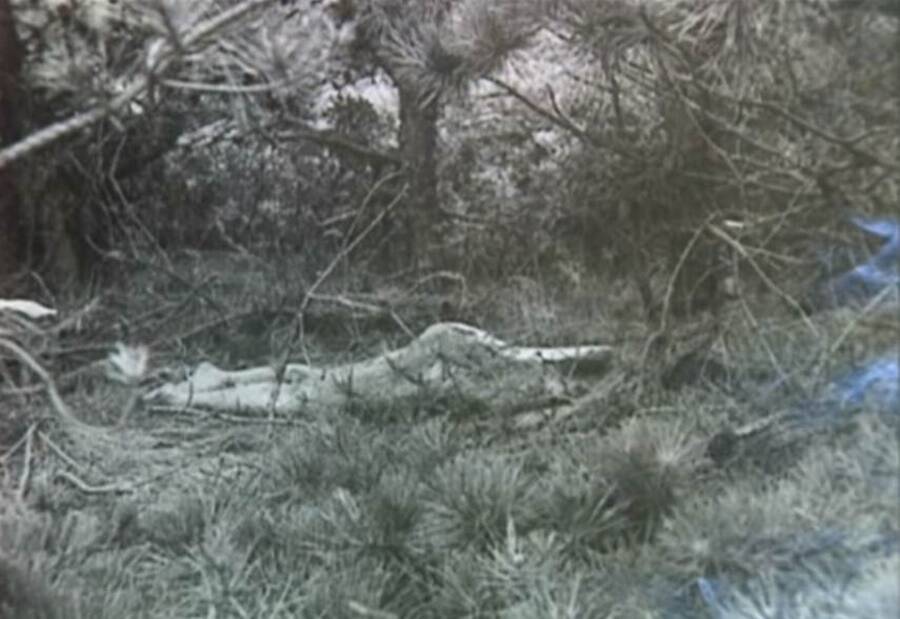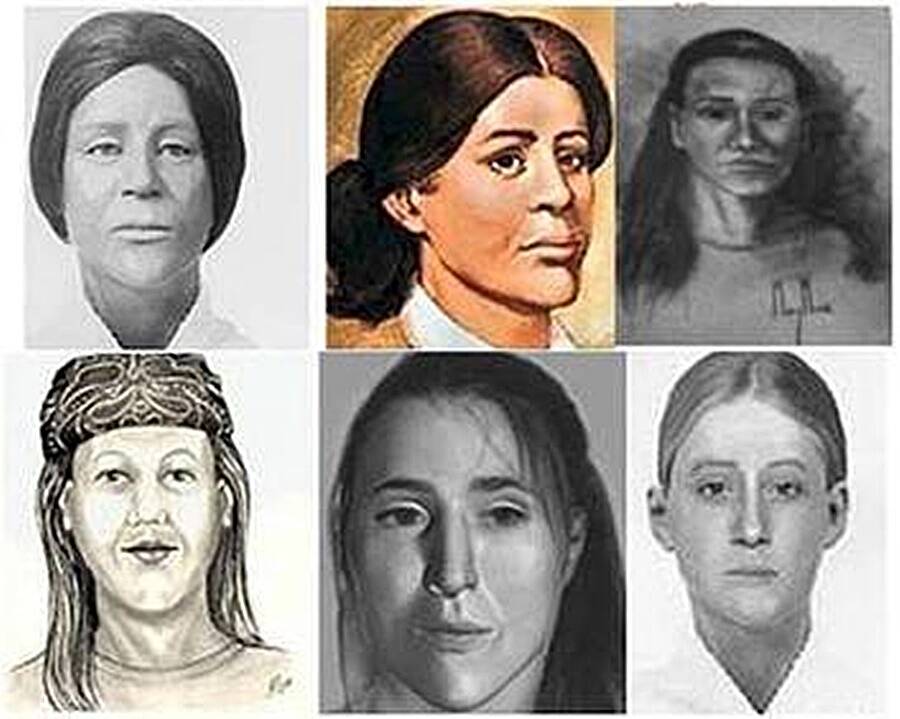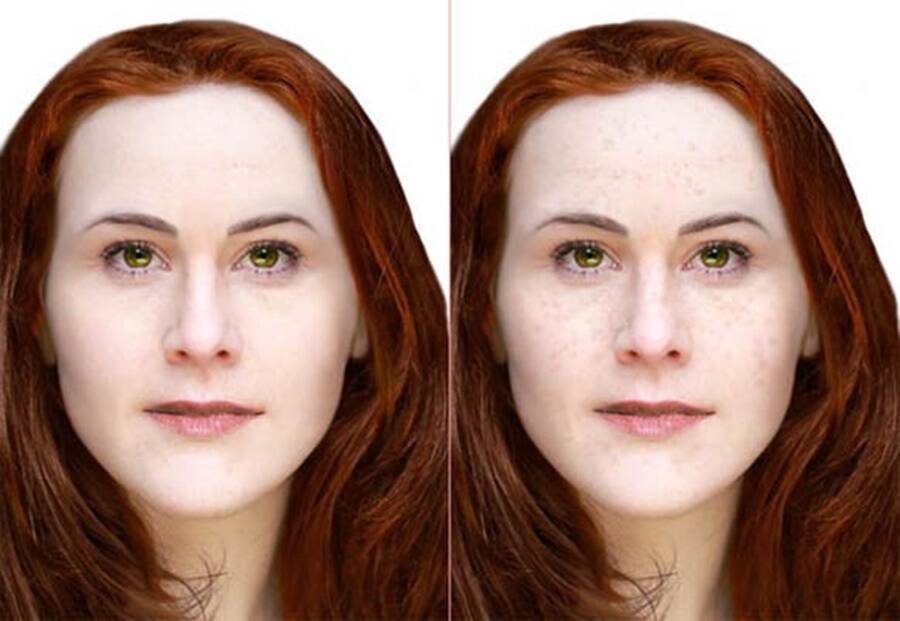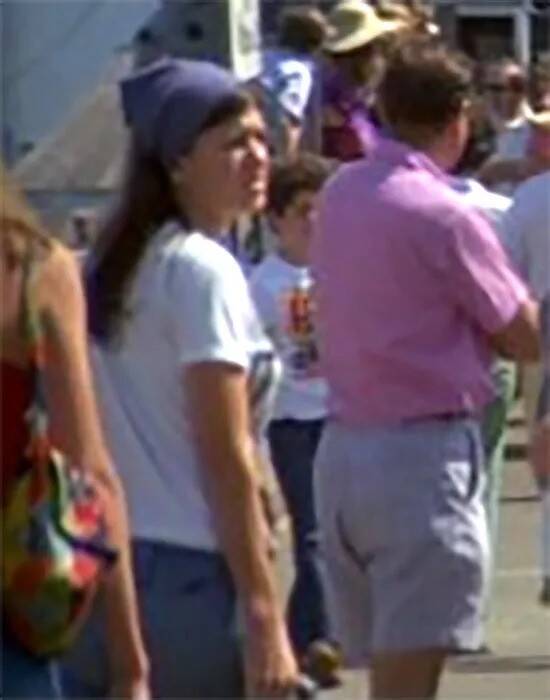The "Lady of the Dunes" was found on Cape Cod in 1974. Now, police have identified her as Ruth Marie Terry — and the killer as her husband Guy Mulvadin.

Wikimedia Commons“The Lady of the Dunes” remained unidentified for 48 years after her murder before investigators finally discovered that her name was Ruth Marie Terry — and her killer was her husband, Guy Mulvadin.
On a July morning in 1974, a girl playing with a neighborhood dog along the Race Point Dunes in Provincetown, Massachusetts stumbled upon a horrifying sight: The nude, disfigured body of a woman sprawled out amid the sand and brush. Police were unable to identify her, and the dead woman was thus dubbed the “Lady of the Dunes.” As the decades passed, she became the longest-unidentified homicide victim in Massachusetts history.
The woman was young and white, but little else could be determined. She was lying on a beach blanket, with a pair of jeans underneath her head. She had pink-painted nails and a glittery hairband holding back her auburn hair. Someone walking by might have assumed that she had simply fallen asleep on the beach, except that the woman had been nearly decapitated — and her killer had cut off her hands.
For decades, investigators could neither identify the victim nor any definitive suspects, though they considered some, including mobster Whitey Bulger. For decades, she was known simply as the “Lady of the Dunes.”
But new forensic technology eventually brought an opportunity to solve the mystery of the Lady of the Dunes for good after nearly five decades. In October 2022, investigators finally identified the victim as Ruth Marie Terry of Tennessee. And shortly thereafter, the police were also able to announce that they’d determined Terry’s killer to be her own husband, Guy Mulvadin.
This is the full story behind this chilling case.
The Horrifying Discovery Of The Lady Of The Dunes’ Body In Provincetown

Wikimedia CommonsThe story of the Lady of the Dunes was one of the most bizarre mysteries in Cape Cod’s history.
The story of the Lady of the Dunes began on July 26, 1974. On the otherwise unremarkable summer day, 12-year-old Leslie Metcalfe and her parents were hiking back from a visit with friends, trailed by a couple of the friends’ dogs, when one of the dogs started to bark at something in the distance.
It darted off — and Leslie followed.
The dog led Leslie to something in the dunes. At first glance, Leslie thought that the shape on the ground was a dead deer because of the color of its skin. But then she saw that it was a human. Not only that, it had no hands.
Leslie alerted her parents, who quickly notified the park rangers.
Investigators who responded to the scene found that the woman, lying on a towel with her head resting on a pair of jeans and a bandana, had been seemingly bludgeoned in her sleep. Her skull was bashed in, she’d been nearly decapitated, and her killer had cut off both of her hands, removing one of her forearms in the process.
“It was ghastly,” park ranger James Hankins told local media at the time. “It was as if she had been killed lying there, alone or on a blanket with someone, and someone came up and clubbed her. There was no sign of a struggle; even the sand hadn’t been disturbed.”
So who was she? Before long, the Jane Doe became known as the “Lady of the Dunes” as investigators tried to piece together clues about her identity.
Investigators Left Baffled By The Identity Of The Lady Of The Dunes
As the investigation into the Lady of the Dunes ramped up, investigators could offer only a vague description of the woman found dead on the beach.

Provincetown Police DepartmentOne of the facial reconstructions produced for the Lady of the Dunes case.
She appeared to be between the ages of 20 and 40 years old. She had auburn hair in a ponytail, stood between five foot six inches and five foot eight inches, and weighed about 145 pounds. Her toenails were pink, and investigators determined that she had about $10,000 worth of gold crowns in her mouth. They dubbed this dental work “New York style.”
Though killed by a crushed skull — seemingly with a military-style entrenching tool — investigators also determined that the Lady of the Dunes had been strangled, possibly sexually assaulted, and that the killer had tried to remove some of her teeth.
Despite these details, the identity of the Lady of the Dunes eluded them. Her killer had cut off her hands, which made identifying her with fingerprints impossible. Meanwhile, the case shocked the locals of Provincetown, a place better known for artists and its LGBTQ+ community than for crime.

Wikimedia CommonsThe victim’s face has been reconstructed repeatedly over the decades.
“It was a horrific, brutal murder,” former Provincetown Police Chief Jeff Jaran, the town’s fourth police chief to investigate the shocking unsolved murder, remarked to Cape Cod Today in 2012. “It would be awful for any time, any place. But for the Cape, for Provincetown?”
The case stumped investigators like Jaran, and the Lady of the Dunes soon became the oldest unidentified homicide victim Massachusetts history. But a number of theories about her identity emerged over the decades.
From Whitey Bulger To Jaws, Theories About The Dead Woman On The Cape Cod Beach
Decades after the Lady of the Dunes was laid to rest at Saint Peter’s Cemetery in October 1974, her identity continued to stump investigators. But a number of theories did emerge over the years.
A woman from Boston reached out to the police after seeing a facial reconstruction of the victim. She told them that the woman looked like her sister, who had disappeared in 1974. Another woman contacted the police to let them know she’d seen her father strangle a woman in the 1970s, and the Lady of the Dunes could be his victim. But neither of these possible tips panned out in the end.

Wikimedia CommonsA reconstruction of the then-unidentified Lady of the Dunes from 2010.
At one point, investigators suspected that the victim could be Rory Gene Kesinger, a known drug dealer and bank robber. Kesinger resembled the victim, and she had escaped from the Plymouth County Correctional Facility in Massachusetts in 1973. But a DNA test proved that the Lady of the Dunes was not Kesinger.
In the 1980s, investigators toyed with the theory that the victim could have been killed by James “Whitey” Bulger, an Irish mob crime boss. Witnesses claimed that they’d seen Bulger with a woman matching the victim’s description — and Bulger had removed the teeth of one of his female victims in the past. However, he was never considered a suspect.
Decades later, another killer became a potential suspect. Imprisoned murderer Hadden Clark confessed to killing the Lady of the Dunes in 2000. However, there was no evidence linking Clark to the crime — and he suffered from paranoid schizophrenia, which made his confession suspect.
In the end, one of the oddest theories of the Lady of the Dunes cropped up in 2015. Then, author Joe Hill — the son of Stephen King — speculated that she had appeared as an extra in the 1975 hit film Jaws.

Universal PicturesSome suspected that this extra from Jaws (1975) could be the Lady of the Dunes.
Hill noticed that a woman in the background of one of the film’s scenes matched the victim’s description. She also appeared to be wearing a pair of jeans and a blue bandana, two items that were found at the crime scene.
It was a wild theory, but not a totally implausible one. Jaws was filmed in Martha’s Vineyard, only a few hours away from Provincetown. But Jaws producers had not recorded the names of any extras. And retired staff sergeant Warren Tobias, who chased the Lady of the Dunes’ identity for 20 years, was skeptical of this theory. “There were probably [hundreds] of thousands of women who dressed that way [in the 1970s],” he remarked.
Each of these theories about the victim went nowhere. Investigators even exhumed her body twice to to obtain DNA evidence, but those examinations also revealed nothing. Then, in the 21st century, new technology finally gave the Lady of the Dunes a name.
The Lady Of The Dunes Is Identified As Ruth Marie Terry
Investigators tried to utilize technology to identify the victim for years. Lacking fingerprints, they made clay models of her head, took CT scans, drew age-regression drawings, and even produced an advanced composite 3D image of her face in 2010. But it wasn’t until 2022 that the Lady of the Dunes was finally identified.
Then, using investigative genealogy — the same technique used to identify the Golden State Killer in 2018 — investigators were finally able to give the victim a name. In October 2022, the FBI announced that the Lady of the Dunes was 37-year-old Ruth Marie Terry of Tennessee.

FBIRuth Marie Terry was 37 years old when she went missing in 1974.
“She was born in Tennessee in 1936,” FBI Special Agent in Charge Joseph Bonavolonta announced on Oct. 31, 2022. “Ruth was a daughter, sister, aunt, wife, and mother. Investigators have also determined that in addition to Tennessee, she had ties to California, Massachusetts, and Michigan.”
Terry grew up in Whitwell, Tennessee, and left home as a teenager. After leaving home she moved to Michigan and then California, before returning to Tennessee. Her family never officially reported her missing, but had not forgotten her. According to Terry’s nephew, his sister was “hellbent” on finding their missing aunt, and had tried using genealogical websites and DNA tests to track her down over the years.
So who had killed Ruth Marie Terry?

FBIA portrait of Ruth Marie Terry, the so-called “Lady of the Dunes.”
Just days after revealing the Lady of the Dunes’ identity, investigators also revealed the name of her murderer: her husband, Guy Muldavin.
Guy Muldavin Is Unmasked As Ruth Marie Terry’s Killer And The Lady Of The Dunes Case Is Solved

Massachusetts State PoliceThe husband of Ruth Marie Terry and the killer in the Lady of the Dunes case, Guy Muldavin had been suspected of killing women before.
After identifying Ruth Marie Terry as the Lady of the Dunes, investigators learned that she had gotten married shortly before her murder to a man named Guy Muldavin. The newlyweds had traveled after their wedding, and had even stopped in Tennessee to see Terry’s family. But in the summer of 1974, Muldavin returned alone. He told Terry’s family that they’d had a fight during their honeymoon and that the hadn’t heard from her since. Disturbingly, Muldavin also mentioned to other people that his wife had died.
“Based on the investigation into the death of Ms. Terry, it has been determined that Mr. Muldavin was responsible for Ms. Terry’s death in 1974,” prosecutors announced in a statement.
It wasn’t the first time that Muldavin — who died in 2002 — had been suspected of murder. He was a suspect in a 1950s double homicide in California and was considered the prime suspect in the disappearance of his wife and stepdaughter in 1960 in Seattle. Police in Seattle even found human remains in Muldavin’s wife’s septic tank, but they ultimately weren’t able to tie Muldavin to any crime.
With that, the mystery of the Lady of the Dunes was finally solved. For many, she’ll always be remembered as the mutilated corpse found on one summer day in Provincetown. But to her family, she was something else. Her nephew told The New York Times that his most vivid memories of his aunt were of her “auburn hair” and her “big smile.”
Next, read about the tragic tale of Tammy Jo Alexander, one of the 600 women believed to have been killed by the “confession killer.” Then, take a look inside seven chilling cold cases from history.





